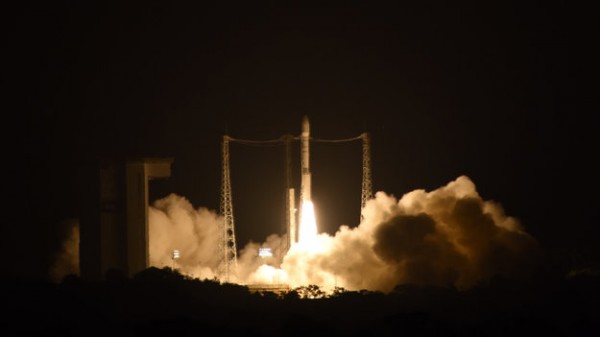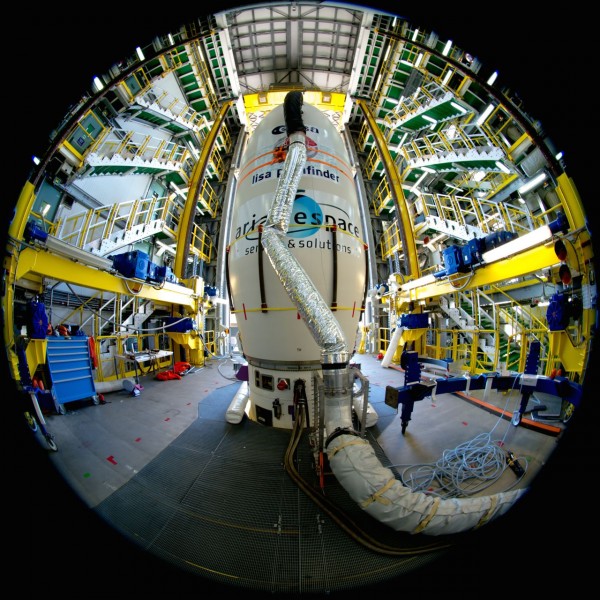
The trailblazing LISA Pathfinder mission lifted off earlier today (December 3, 2015) on a Vega rocket from the European spaceport in Kourou, French Guiana. The spacecraft is ESA’s technology demonstrator, designed to pave the way for detecting gravitational waves – ripples in the curvature of spacetime, propagating outward as waves from a mass – from objects in space.
The Vega launcher lifted off at 4:04 GMT (12:04 a.m. EST) on December 3, 2015. A statement from the Albert Einstein Institute reported:
About seven minutes later, after separation of the first three stages, the first ignition of Vega’s upper stage propelled LPF into a low orbit, followed by another ignition about one hour and 40 minutes into the flight.
The spacecraft separated from the upper stage at 5:49 GMT (6:49 CET). Controllers at ESA’s operations center in Darmstadt, Germany then established control.
LPF is now in an elliptical orbit, its closest point to Earth at around 200 km [125 miles] and farthest point at around 1,500 km [about 900 miles].
On December 6, a series of six thruster burns will commence, which will lift the apogee of the elliptical orbit higher and higher over the next five days.
The Max Planck Institute for Gravitational Physics (Albert Einstein Institute) in Hannover and other institutions spent more than 10 years in the scientific development of LISA Pathfinder, which is the forerunner of a planned gravitational-wave observatory eLISA. Karsten Danzmann, director at the Albert Einstein Institute, said in the December 3 statement:
With LISA Pathfinder we will demonstrate crucial technologies for future missions such as eLISA and will be one large step closer to the detection of gravitational waves from space.
Read more about gravitational waves
The statement also commented:
The LISA Pathfinder (LPF) launch coincides almost perfectly with the 100th anniversary of the publication of Albert Einstein’s theory of general relativity, published on 2 December 1915. The theory predicts the existence of gravitational waves, tiny ripples in space-time propagating at the speed of light, which so far have not been directly observed.
Read more about LISA Pathfinder and its mission.
Good luck, LISA Pathfinder!

Bottom line: LISA Pathfinder – forerunner of a mission that, it is hoped, will detect gravitational waves from space – lifted off at 4:04 GMT (12:04 a.m. EST) on on December 3, 2015.











